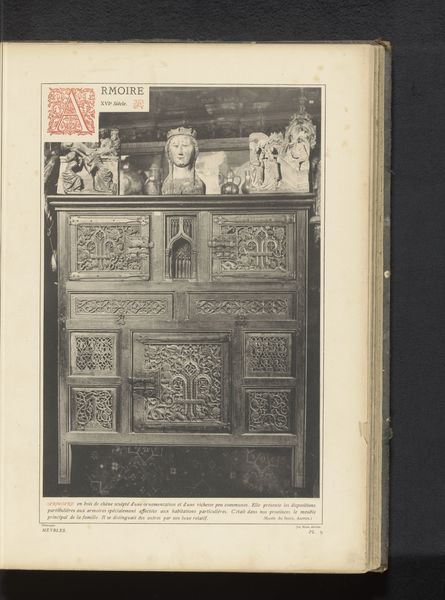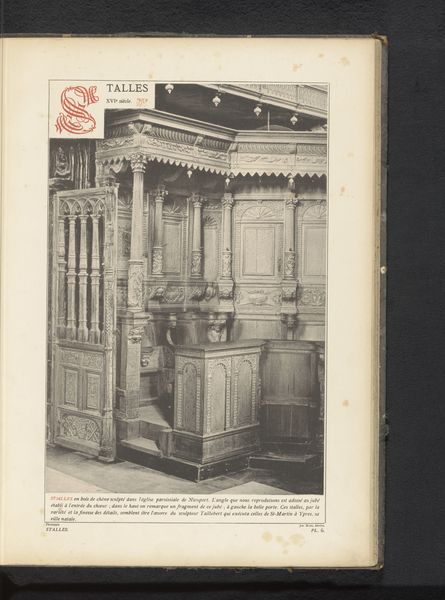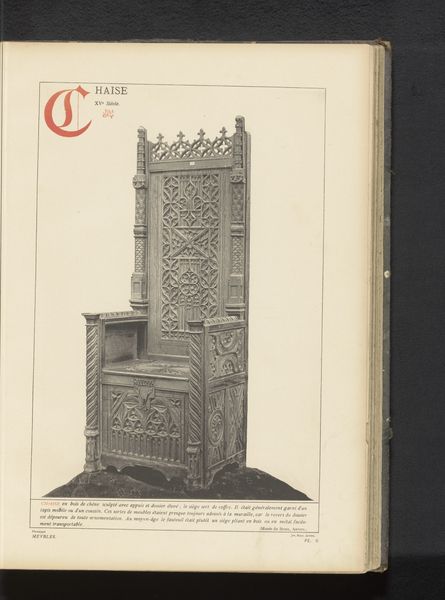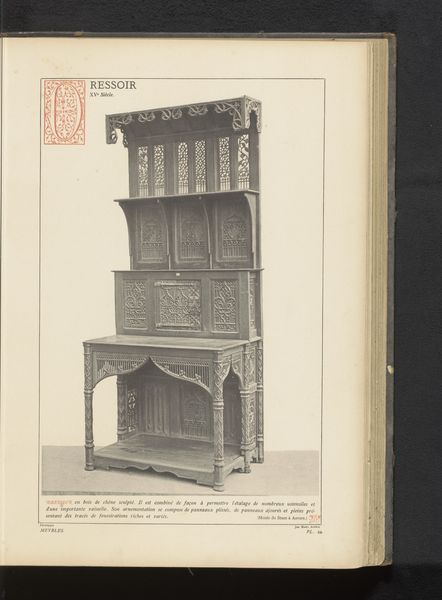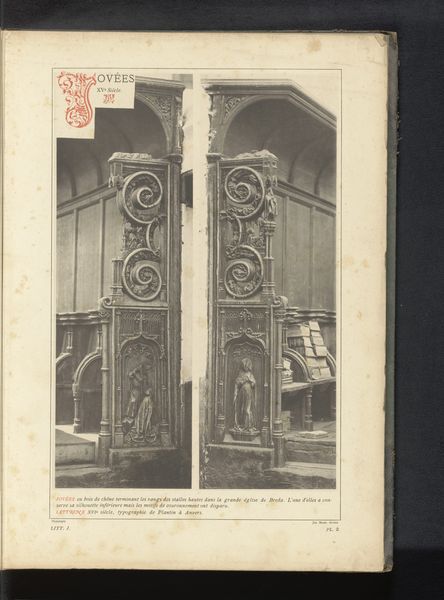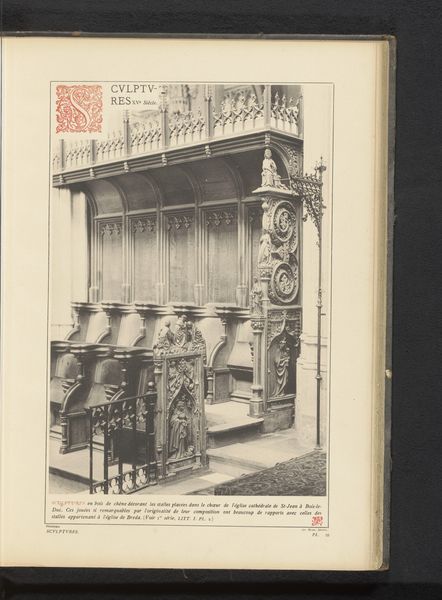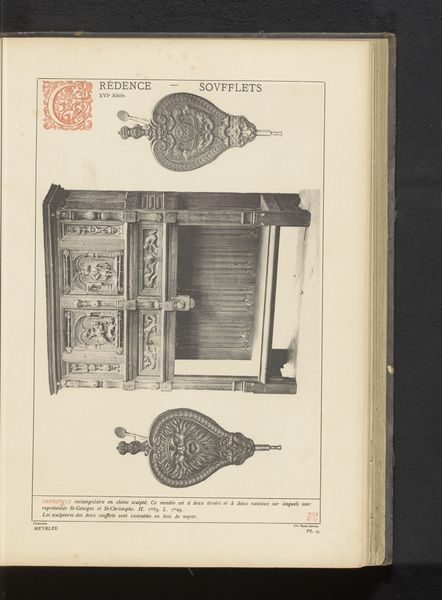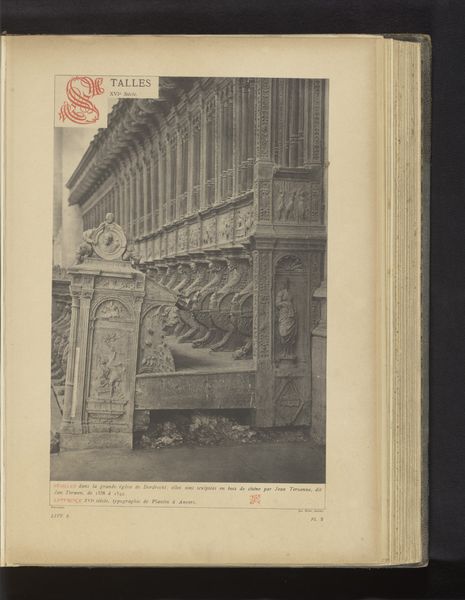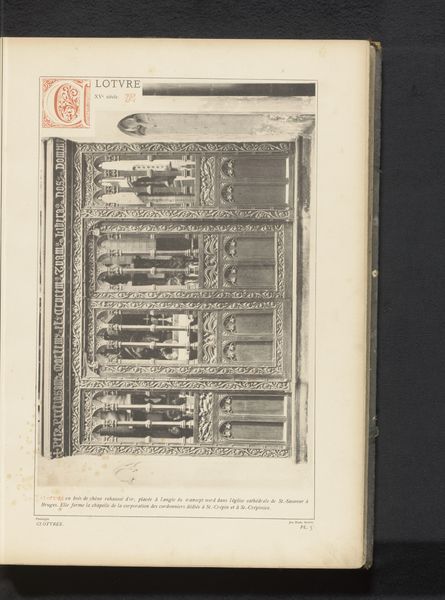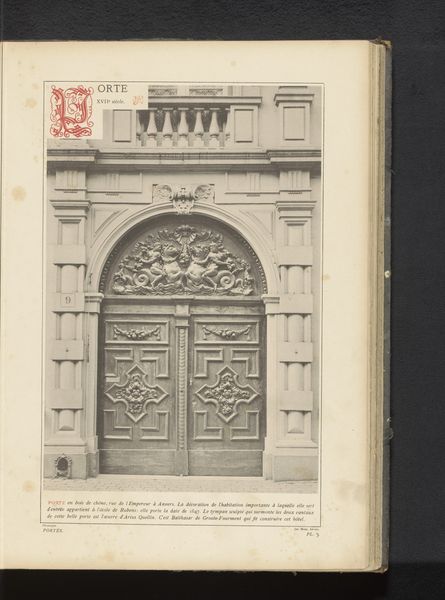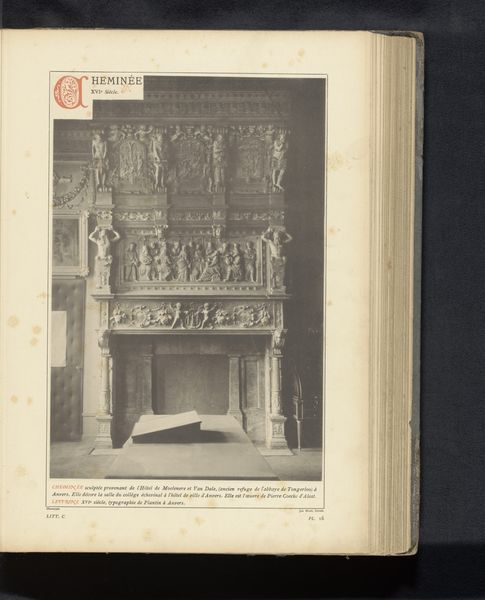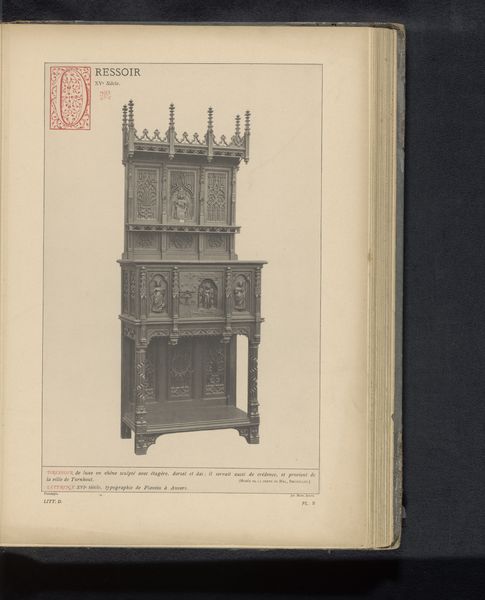
carving, print, photography, wood
#
medieval
#
carving
# print
#
photography
#
wood
#
genre-painting
Dimensions: height 344 mm, width 235 mm
Copyright: Rijks Museum: Open Domain
Editor: Here we have a photograph of an oak confessional, or *Eikenhouten biechtstoel*, which dates back to before 1889. It’s quite imposing and grand, despite being rendered in a monochromatic photograph. All those intricate carvings! What stands out to you about this piece? Curator: The symbols embedded within its architecture speak volumes about the evolving role of confession. Notice the geometric patterns and the cushioned seat, the wood's very grain seems to echo both strength and solace. Don’t you agree? Editor: Absolutely. It feels like a place of both judgment and comfort, simultaneously. What would the symbolism have meant to people at the time? Curator: Consider the visual weight of this booth, and the architecture around it: confession was not merely a private act but a public drama. Each carefully carved element – the lines, the light and shadows -- played into the theater of repentance. It’s almost like a stage, directing and shaping behavior. What do you imagine it felt like to sit in that chair? Editor: I imagine a sense of exposure but also protection...a literal and metaphorical weighing of one's conscience. It seems almost contradictory, doesn’t it? Curator: Not at all. Contradiction is at the heart of humanity. This confessional doesn’t just show a booth, but visualizes how cultural memory imprints itself, generation upon generation, upon our most private selves. We’re looking at a material record of emotional burdens, of hopes for redemption, aren't we? Editor: That's a really powerful way to think about it. I now see it as less about religious architecture, and more about understanding human nature.
Comments
No comments
Be the first to comment and join the conversation on the ultimate creative platform.
